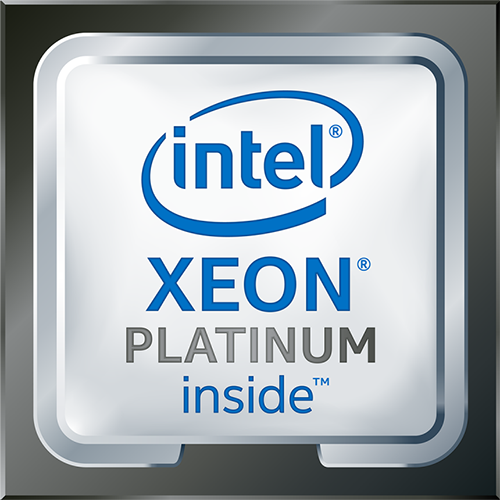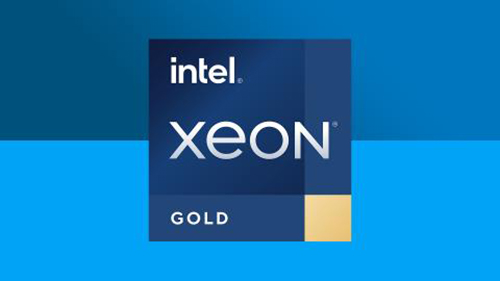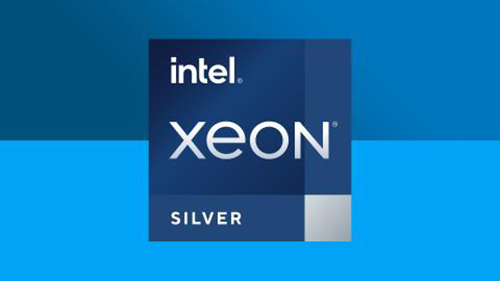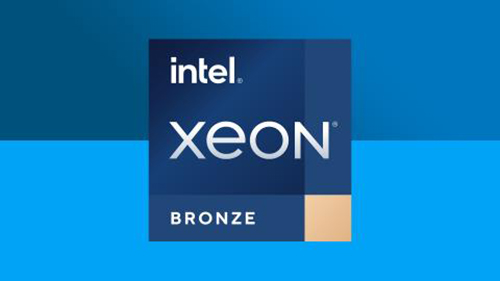

Intel® Xeon® Platinum Processors are the foundation for secure, agile, data centers. With built-in AI acceleration, advanced security technologies, and exceptional multi-socket processing performance, these processors are built for mission-critical, real-time analytics, machine learning, artificial intelligence, and cloud workloads.
With trusted, hardware-enhanced data service delivery, these processors deliver improvements in I/O, memory, storage, and network technologies to harness actionable insights from our increasingly data-fueled world.
Designed for advanced analytics, artificial intelligence, and high-density infrastructure, Intel® Xeon® Platinum processors deliver exceptional performance, platform capabilities, and workload acceleration from edge to cloud.
Intel® Xeon® Platinum Processors deliver phenomenal 2, 4, and 8+ socket performance for your advanced analytics, machine learning, AI workloads, and more.
Key Specs - Comms Express Part No INTBX806738160:
Model
Intel® Xeon® Platinum 8160 Processor
Product Collection
Intel® Xeon® Scalable Processors
Vertical Segment
Server
Processor Number
8160
CPU Specifications
Processor Base Frequency
2.1 GHz
Max Turbo Frequency
3.7 GHz
Cache
33 MB L3 Cache
# of UPI Links
3
TDP
(Thermal Design Power)
150 W
Memory Specifications
Max Memory Size
(dependent on memory type)
768 GB
Memory Types
DDR4-2666
Max Memory Speed
2666 MHz
TCASE
85°C
You can download a full specifications comparison sheet of Xeon Platinum Scalable Processors from our "Documentation" section (above):
Features and Benefits
Only Data Center CPU with Built-in AI Acceleration
3rd Gen Intel® Xeon® Scalable processors are the only data center CPU with built-in AI acceleration, supported by end-to-end data science tools, and a vast ecosystem of smart solutions.
Intel® Deep Learning Boost
Accelerate Your AI Journey with Intel®
Intel® Optane™ Persistent Memory
A new foundation for performance begins with support for Intel’s breakthrough Intel Optane persistent memory, delivering up-to 36TB of system-level memory capacity when combine with traditional DRAM, helping to transform critical data workloads – from cloud and databases, to In-memory analytics, and content delivery networks, now supported by select Intel® Xeon® Scalable processors.
Advanced Security Technologies
3rd Gen Intel® Xeon® Scalable processors include Intel® SGX, which protects data and application code in real time from the edge to the data center and multi-tenant public cloud, enabling enhanced collaboration (for example for federated learning in AI) using shared data - without compromising privacy.
Outstanding Gen-on-Gen Performance
The new 3rd Gen Xeon Scalable processors are based on a balanced, efficient architecture that increases core performance, memory, and I/O bandwidth to accelerate diverse workloads from the data center to the edge.
Available with up to 40 powerful cores.
Built-in workload acceleration features include
Intel Deep Learning Boost, Intel Advanced Vector Extensions 512, and Intel Speed Select Technology.
Available Multi-Socket Scale to Propel Insights
Four-to-eight–socket 3rd Gen Intel Xeon Scalable processors deliver multi-socket core count density, with up to 224 cores per platform in an 8-socket configuration.
Up to six Intel UltraPath Interconnect (Intel UPI) channels increase platform scalability and improve inter-CPU bandwidth for I/O-intensive workloads versus the previous generation, offering the perfect balance between improved throughput and energy efficiency.



Intel® Xeon® Platinum Processors are the foundation for secure, agile, data centers. With built-in AI acceleration, advanced security technologies, and exceptional multi-socket processing performance, these processors are built for mission-critical, real-time analytics, machine learning, artificial intelligence, and cloud workloads.
With trusted, hardware-enhanced data service delivery, these processors deliver improvements in I/O, memory, storage, and network technologies to harness actionable insights from our increasingly data-fueled world.
Designed for advanced analytics, artificial intelligence, and high-density infrastructure, Intel® Xeon® Platinum processors deliver exceptional performance, platform capabilities, and workload acceleration from edge to cloud.
Intel® Xeon® Platinum Processors deliver phenomenal 2, 4, and 8+ socket performance for your advanced analytics, machine learning, AI workloads, and more.
Key Specs - Comms Express Part No INTBX806738170:
Model
Intel® Xeon® Platinum 8170 Processor
Product Collection
Intel® Xeon® Scalable Processors
Vertical Segment
Server
Processor Number
8170
CPU Specifications
Processor Base Frequency
2.1 GHz
Max Turbo Frequency
3.7 GHz
Cache
35.75 MB L3 Cache
# of UPI Links
3
TDP
(Thermal Design Power)
165 W
Memory Specifications
Max Memory Size
(dependent on memory type)
768 GB
Memory Types
DDR4-2666
Max Memory Speed
2666 MHz
TCASE
89°C
You can download a full specifications comparison sheet of Xeon Platinum Scalable Processors from our "Documentation" section (above):
Features and Benefits
Only Data Center CPU with Built-in AI Acceleration
3rd Gen Intel® Xeon® Scalable processors are the only data center CPU with built-in AI acceleration, supported by end-to-end data science tools, and a vast ecosystem of smart solutions.
Intel® Deep Learning Boost
Accelerate Your AI Journey with Intel®
Intel® Optane™ Persistent Memory
A new foundation for performance begins with support for Intel’s breakthrough Intel Optane persistent memory, delivering up-to 36TB of system-level memory capacity when combine with traditional DRAM, helping to transform critical data workloads – from cloud and databases, to In-memory analytics, and content delivery networks, now supported by select Intel® Xeon® Scalable processors.
Advanced Security Technologies
3rd Gen Intel® Xeon® Scalable processors include Intel® SGX, which protects data and application code in real time from the edge to the data center and multi-tenant public cloud, enabling enhanced collaboration (for example for federated learning in AI) using shared data - without compromising privacy.
Outstanding Gen-on-Gen Performance
The new 3rd Gen Xeon Scalable processors are based on a balanced, efficient architecture that increases core performance, memory, and I/O bandwidth to accelerate diverse workloads from the data center to the edge.
Available with up to 40 powerful cores.
Built-in workload acceleration features include
Intel Deep Learning Boost, Intel Advanced Vector Extensions 512, and Intel Speed Select Technology.
Available Multi-Socket Scale to Propel Insights
Four-to-eight–socket 3rd Gen Intel Xeon Scalable processors deliver multi-socket core count density, with up to 224 cores per platform in an 8-socket configuration.
Up to six Intel UltraPath Interconnect (Intel UPI) channels increase platform scalability and improve inter-CPU bandwidth for I/O-intensive workloads versus the previous generation, offering the perfect balance between improved throughput and energy efficiency.



Intel® Xeon® Platinum Processors are the foundation for secure, agile, data centers. With built-in AI acceleration, advanced security technologies, and exceptional multi-socket processing performance, these processors are built for mission-critical, real-time analytics, machine learning, artificial intelligence, and cloud workloads.
With trusted, hardware-enhanced data service delivery, these processors deliver improvements in I/O, memory, storage, and network technologies to harness actionable insights from our increasingly data-fueled world.
Designed for advanced analytics, artificial intelligence, and high-density infrastructure, Intel® Xeon® Platinum processors deliver exceptional performance, platform capabilities, and workload acceleration from edge to cloud.
Intel® Xeon® Platinum Processors deliver phenomenal 2, 4, and 8+ socket performance for your advanced analytics, machine learning, AI workloads, and more.
Key Specs - Comms Express Part No INTBX806958256:
Model
Intel® Xeon® Platinum 8256 Processor
Product Collection
2nd Generation Intel® Xeon® Scalable Processors
Vertical Segment
Server
Processor Number
8256
CPU Specifications
Processor Base Frequency
3.8 GHz
Max Turbo Frequency
3.9 GHz
Cache
16.5 MB
# of UPI Links
3
TDP
(Thermal Design Power)
105 W
Memory Specifications
Max Memory Size
(dependent on memory type)
1 TB
Memory Types
DDR4-2933
Max Memory Speed
2933 MHz
TCASE
72°C
You can download a full specifications comparison sheet of Xeon Platinum Scalable Processors from our "Documentation" section (above):
Features and Benefits
Only Data Center CPU with Built-in AI Acceleration
3rd Gen Intel® Xeon® Scalable processors are the only data center CPU with built-in AI acceleration, supported by end-to-end data science tools, and a vast ecosystem of smart solutions.
Intel® Deep Learning Boost
Accelerate Your AI Journey with Intel®
Intel® Optane™ Persistent Memory
A new foundation for performance begins with support for Intel’s breakthrough Intel Optane persistent memory, delivering up-to 36TB of system-level memory capacity when combine with traditional DRAM, helping to transform critical data workloads – from cloud and databases, to In-memory analytics, and content delivery networks, now supported by select Intel® Xeon® Scalable processors.
Advanced Security Technologies
3rd Gen Intel® Xeon® Scalable processors include Intel® SGX, which protects data and application code in real time from the edge to the data center and multi-tenant public cloud, enabling enhanced collaboration (for example for federated learning in AI) using shared data - without compromising privacy.
Outstanding Gen-on-Gen Performance
The new 3rd Gen Xeon Scalable processors are based on a balanced, efficient architecture that increases core performance, memory, and I/O bandwidth to accelerate diverse workloads from the data center to the edge.
Available with up to 40 powerful cores.
Built-in workload acceleration features include
Intel Deep Learning Boost, Intel Advanced Vector Extensions 512, and Intel Speed Select Technology.
Available Multi-Socket Scale to Propel Insights
Four-to-eight–socket 3rd Gen Intel Xeon Scalable processors deliver multi-socket core count density, with up to 224 cores per platform in an 8-socket configuration.
Up to six Intel UltraPath Interconnect (Intel UPI) channels increase platform scalability and improve inter-CPU bandwidth for I/O-intensive workloads versus the previous generation, offering the perfect balance between improved throughput and energy efficiency.




- Review: The 10 Best Wireless Access Points
- Review: The Top 10 Best Ethernet Cables
- What Is An Ethernet Cable And What Does It Do?
- 10 Best CCTV Security IP Cameras For Home & Business
- Review: Best Powerline Adapters In The UK
- Celebrating 20 Years Of Comms Express!
- The Top 10 DrayTek Wireless Access Points
- Best Selling APC Products At Comms Express
- Review: Top 5 Best Performing APC Uninterruptible Power Supply Units (UPS)
- Review: Top 10 Best PDU’s













